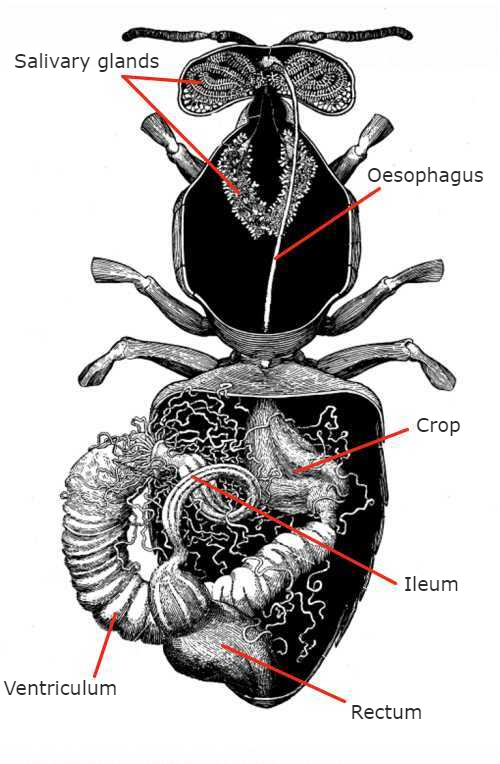Do Bees Have Kidneys?
Do bees have kidneys? An interesting question. In order to answer the question, we must first understand what kidneys are, what they do, and where they are found.
What are kidneys and do bees have them?
Kidneys are organs found in vertebrates, and they fulfil a number of roles, among them, the excretion of waste products from the body by creating urine; and helping to maintain hydration and water-salt balance.
However, bees are insect invertebrates, and do not have kidneys. However, bees have the Malpighian tubule system.
What is the Malpighian system, where is it found, and how does it work?
The Malpighian system comprises tubules located within the abdomens of bees, which serve to filter and cleanse the bee's hemolymph (blood) from waste products (excreta, excess and non-metabolized substances)1.
Thus, water, minerals and the rest of the products of cell metabolism are excreted into the hemolymph, and then pass to the Malpighian tubules, and later, are absorbed in the hindgut2. The hindgut reclaims water, minerals and necessary salts, whilst undigestible waste passes through the bee's anus (see bee poop).
Do all bee species have the same number of Malpighian tubules?
The simple answer to this question is – no!
It has been observed (for example, in Barbosa-Costa et al3 that not only are the number of Malpighian tubules in larvae and adult bees is variable, it also varies between species. The scientists found that in honey bee larvae, the number of tubules is 4, whereas in adults there are 100 tubules. However, in stingless bee species, the number of Malpighian tubules varies considerably: some groups have four to eight tubules in the larvae and seventy to ninety in adults; while other groups have four tubules in larvae and only twenty to forty tubules in adult bees.
Reference:
1. Grella TC, Soares-Lima HM, Malaspina O, Cornélio Ferreira Nocelli R. Semi-quantitative analysis of morphological changes in bee tissues: A toxicological approach. Chemosphere. 2019 Dec;236:124255. doi: 10.1016/j.chemosphere.2019.06.225.
Epub 2019 Jul 1. PMID: 31323550.
2. De Paula JC, Doello K, Mesas C, Kapravelou G, Cornet-Gómez A, Orantes FJ, Martínez R, Linares F, Prados JC, Porres JM, Osuna A, de Pablos LM. Exploring Honeybee Abdominal Anatomy through Micro-CT and Novel Multi-Staining Approaches. Insects. 2022 Jun 18;13(6):556. doi: 10.3390/insects13060556. PMID: 35735893; PMCID: PMC9224579.
3. Barbosa-Costa, K., Kerr, W.E. & Carvalho-Zilse, G.A. Number of Malpighian Tubules in Larvae and Adults of Stingless Bees (Hymenoptera: Apidae) from Amazonia. Neotrop Entomol 41, 42–45 (2012). https://doi.org/10.1007/s13744-011-0017-5
If you found this page helpful or interesting, I'd really be grateful if you would share it with others - if not this page, perhaps another, such as Gardening For Bees.
Thank you so much :) .
